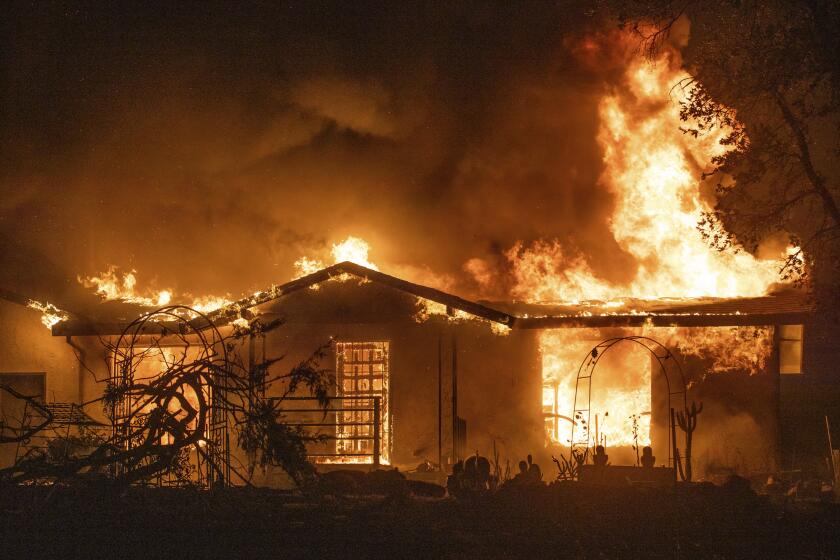Economic loss from L.A. wildfires could top $50 billion, making it one of the costliest U.S. natural disasters

- Share via
WASHINGTON — The destruction caused by the Los Angeles-area wildfires, possibly the worst ever in California, is almost certain to rank as one of the most costly natural disasters in U.S. history, with the total economic toll well into the tens of billions of dollars.
One preliminary estimate calculated by AccuWeather, the weather forecasting service, put the damage and total economic loss at $52 billion to $57 billion — a sum that could rise if the fires continue to spread. Late Thursday, AccuWeather said the loss could be as much as three times its earlier estimate.
J.P. Morgan on Thursday doubled its expectations of economic losses from a day earlier, saying they would be closer to $50 billion.
Coverage of the fires ravaging Altadena, Malibu, Pacific Palisades and Pasadena, including stories about the devastation, issues firefighters faced and the weather.
Five fires have already scorched thousands of acres in and around Los Angeles, prompting evacuation orders for at least 130,000 people and damaging or destroying more than 9,000 structures. Ten people have died.
While it may be days before the full extent of the cost is known, the sheer number of expensive homes and businesses affected suggests that the overall economic damage will likely be greater than the $30-billion loss caused by the Camp fire across California in 2018, considered the state’s most expensive wildfire to date.
The Maui wildfires in 2023, by comparison, caused $5.6 billion in damages, according to the National Oceanic and Atmospheric Administration.
The life-threatening windstorm exploded into a crisis even worse than predicted, with embers flying an estimated two to three miles ahead of the fire.
By the NOAA estimates, Hurricane Katrina in 2005 is the most expensive U.S. natural disaster, costing an estimated $200 billion.
On Thursday, experts at Moody’s said that they expected the insured losses stemming from the L.A. County fires to run in the billions of dollars given the high value of properties in coastal Pacific Palisades, where the first blazes broke out on Tuesday.
Fires burning around Santa Monica and Malibu have torched homes that are among the most expensive in the country, with a median value of over $2 million, said AccuWeather.
J.P. Morgan on Thursday raised its earlier estimate of insured losses to $20 billion.
But many affected homeowners reported that their insurance had been dropped. The insurance industry has been walloped by hurricanes and other harbingers of climate change in recent years, and some of the biggest insurers have ceased writing or stopped renewing policies in high-risk coastal and wildfire areas like Pacific Palisades.
An increasing number of insurance companies have made the decision to stop insuring homes in wildfire-prone California.
California has had one of the highest rates of homeowner policy non-renewals in the country in recent years, based on government reports.
“The fires moving through Los Angeles County highlight the intensifying risk that wildfires pose to significant areas of the State of California,” said Denise Rappmund, senior analyst at Moody’s Ratings.
Here’s what to pack in your “go-bag” in the event you receive an evacuation warning or order.
“It is too early to evaluate potential impacts to property valuations or other credit implications for individual local governments,” she added. “However, these events will continue to have widespread, negative impacts for the state’s broader insurance market — increased recovery costs will likely drive up premiums and may reduce property insurance availability.”
More to Read
Inside the business of entertainment
The Wide Shot brings you news, analysis and insights on everything from streaming wars to production — and what it all means for the future.
You may occasionally receive promotional content from the Los Angeles Times.















